Türkmenbaşy

Caspian coastal resort with soaring ambitions

The shining seaside resort of Awaza graces the eastern shore of the Caspian Sea, the world’s largest totally enclosed body of water, by a very long way. Awaza is a recent extension to the city of Turkmenbashi, itself known as Krasnovodsk during Soviet times. The touristic masterplan of the Turkmen State, the intention is for Awaza to ultimately become the “Dubai of the Caspian”. There is still some way to go.
We only spent one night in Awaza, but it was time enough to enjoy the facilities of the Yelken Yacht Club, built by a Turkish company in a very high-end resort style, although its quality was only skin-deep. We spent the following day exploring the old city of Turkmenbashi, visiting the railway station and the port area, and even chanced upon dance rehearsals of a large group of teenagers who were very keen for us to join their photos.
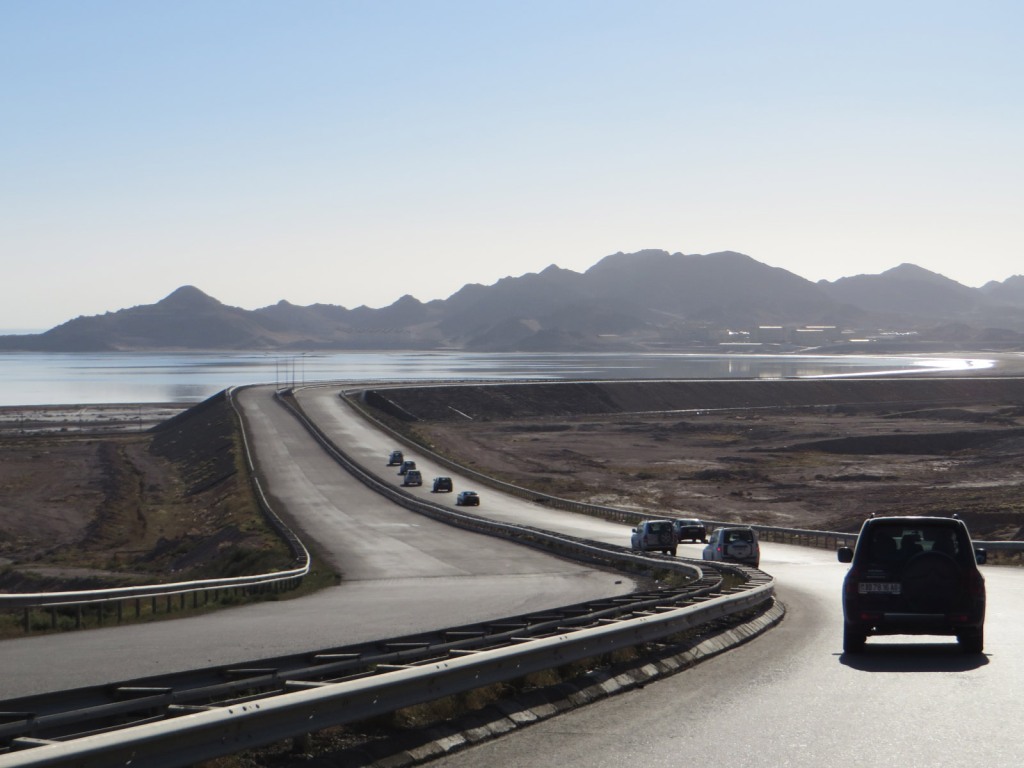
The highway descends from the Karakum Desert plain down to the shores of the Caspian, nearly one hundred feet below sea level. As the largest lake or inland sea in the world, the Caspian is larger than Germany and slightly smaller than Japan, but is only about one third as salty as the world’s oceans.
We stayed at the Yelken Yacht Club, one of several resort hotels in the Awaza area. It was not in the least bit busy, which was nice for us to enjoy the serenity of the gardens, but is symptomatic of the underlying issue with Awaza itself. If you build it, they will come, but only if they can get in to the country!
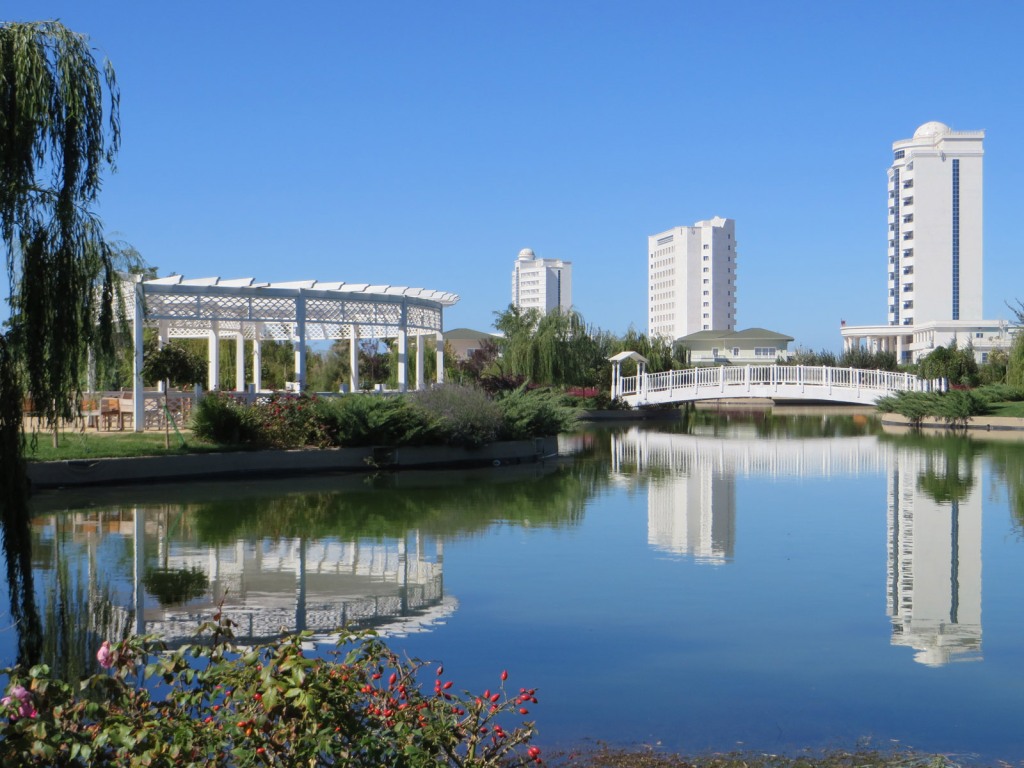
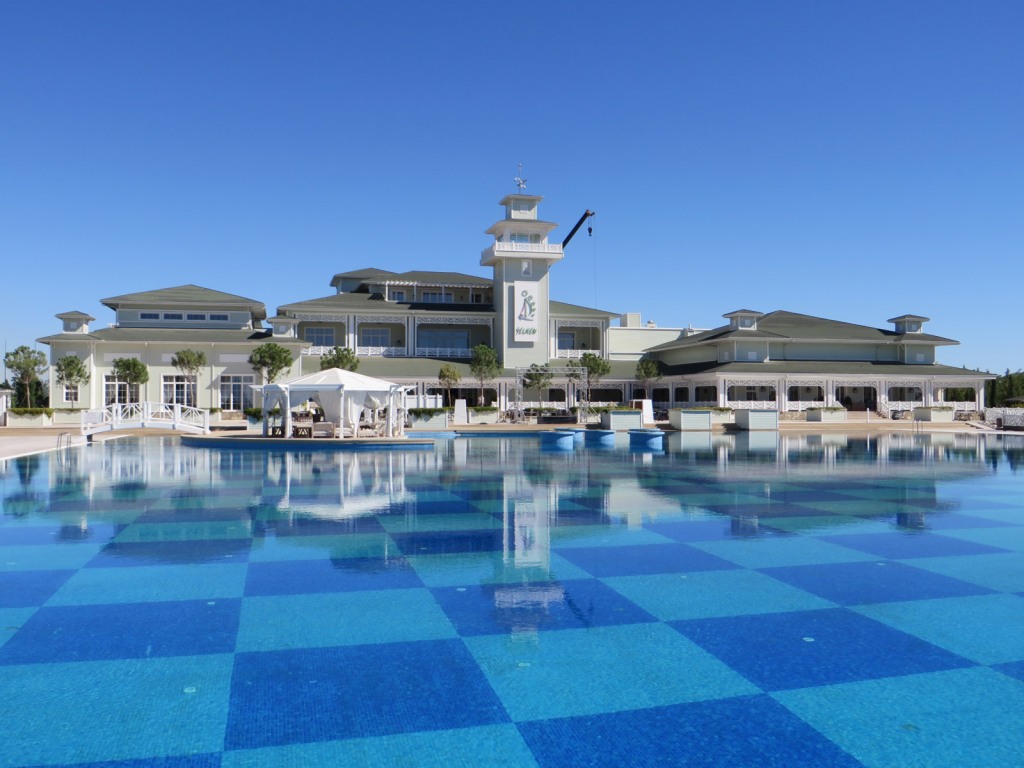
The main hotel building looked out onto the biggest swimming pool I’ve ever borne witness to. But heated swimming pools are for Western wimps it seems, as it was colder than the Caspian itself.
The hotel had several villas divided into rooms, much like resort hotels I’ve seen in Mauritius.
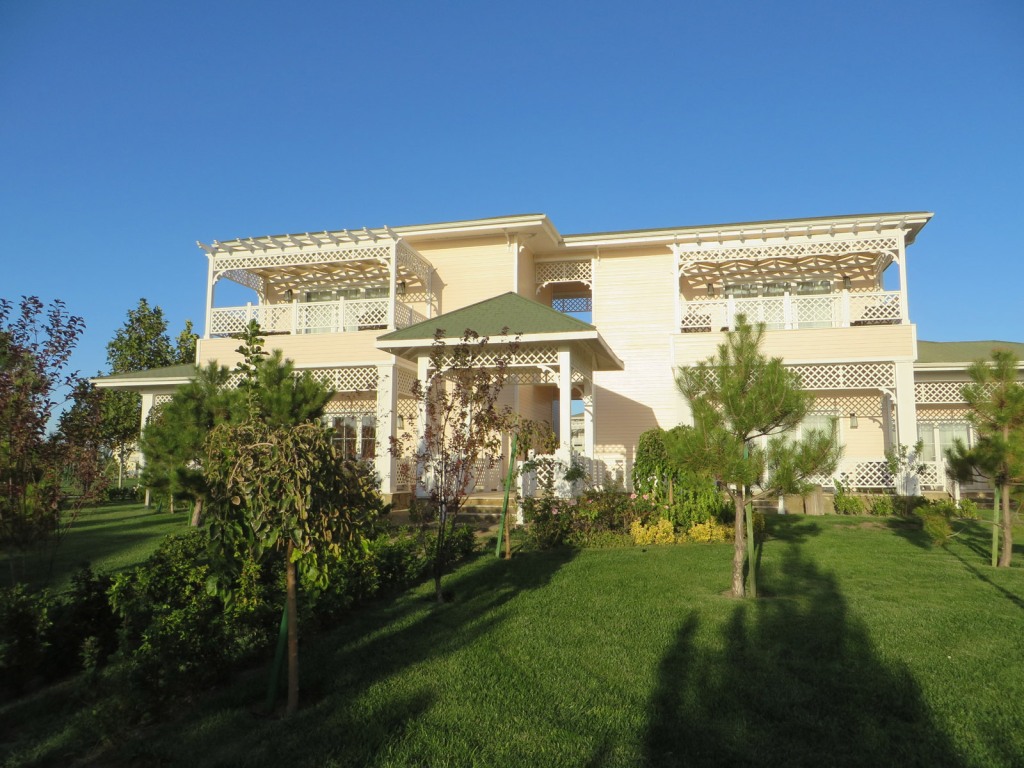
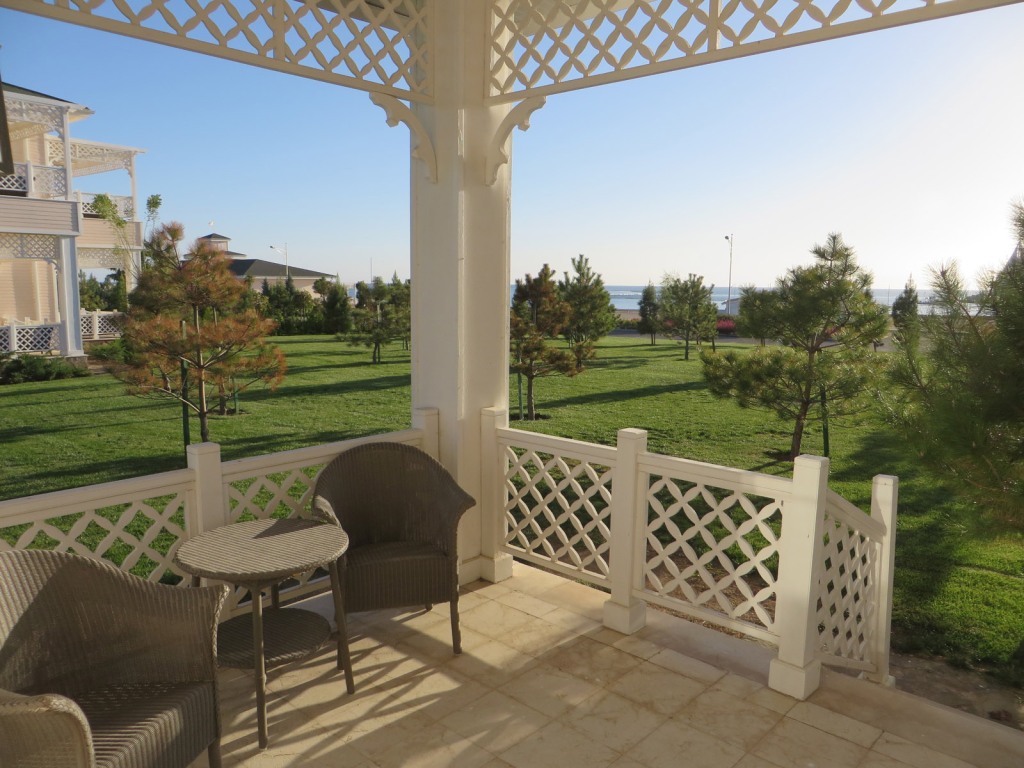
I had a view of the Caspian from the terrace of my room. While everything looked outwardly high quality, the wooden railings were very flimsy and the plumbing wasn’t quite fully thought through.
My hotel room in the evening sun. The niggling details of its construction faded into insignificance, as it was by far the most luxurious of our accommodations in the country.
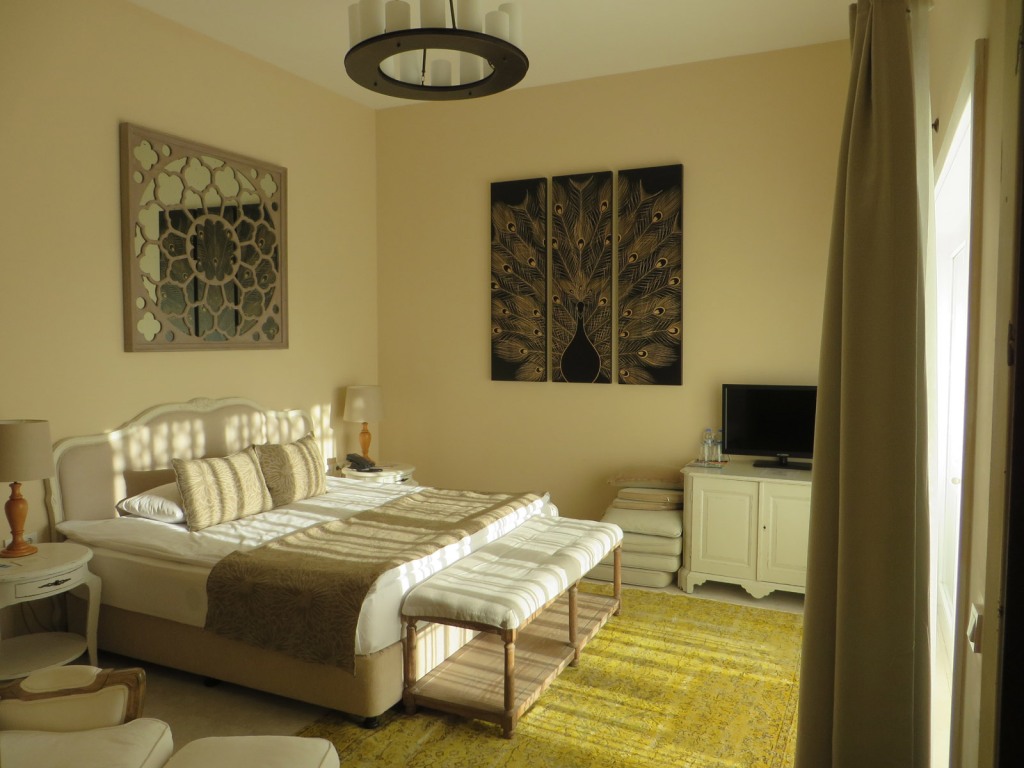

No resort city would be complete without a convention centre, and Awaza is no exception. The striking pyramid structure opened in 2015 and was visible from miles down the coast.
As cold as the outdoor pool was, it was a good thing the resort was so fancy that it had an indoor, and much warmer, pool as well.
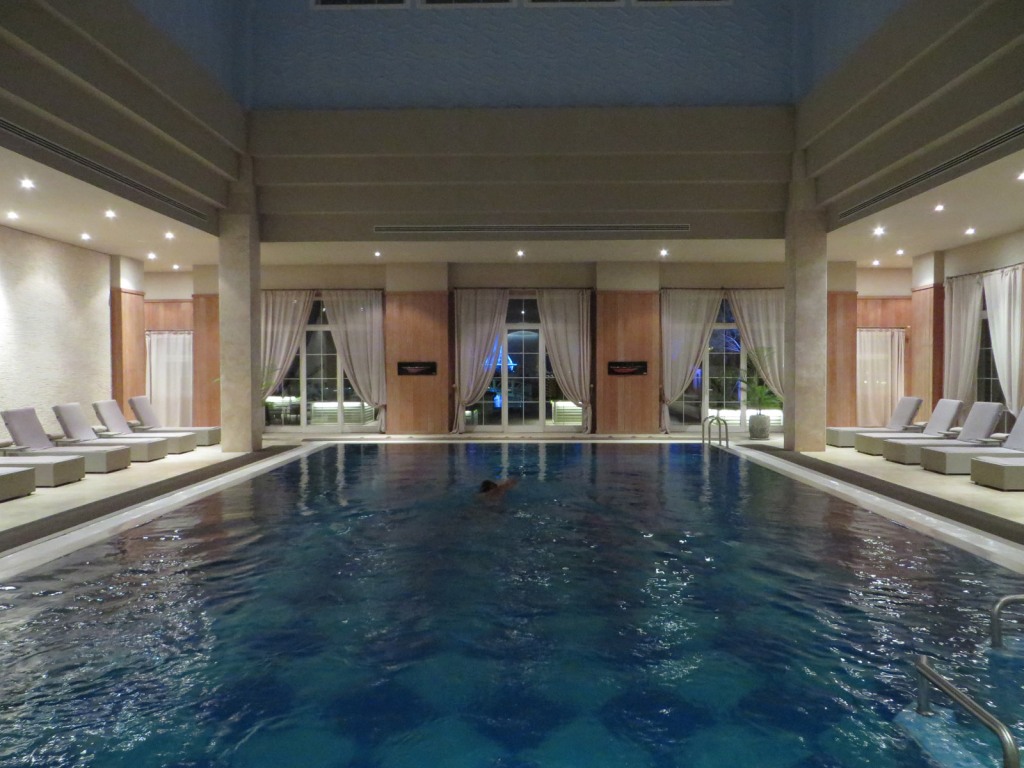

Looking over the enormous outdoor pool towards the café on the pier by night.
Like many of the buildings in Turkmenistan, the hotel café would change colour every few moments.
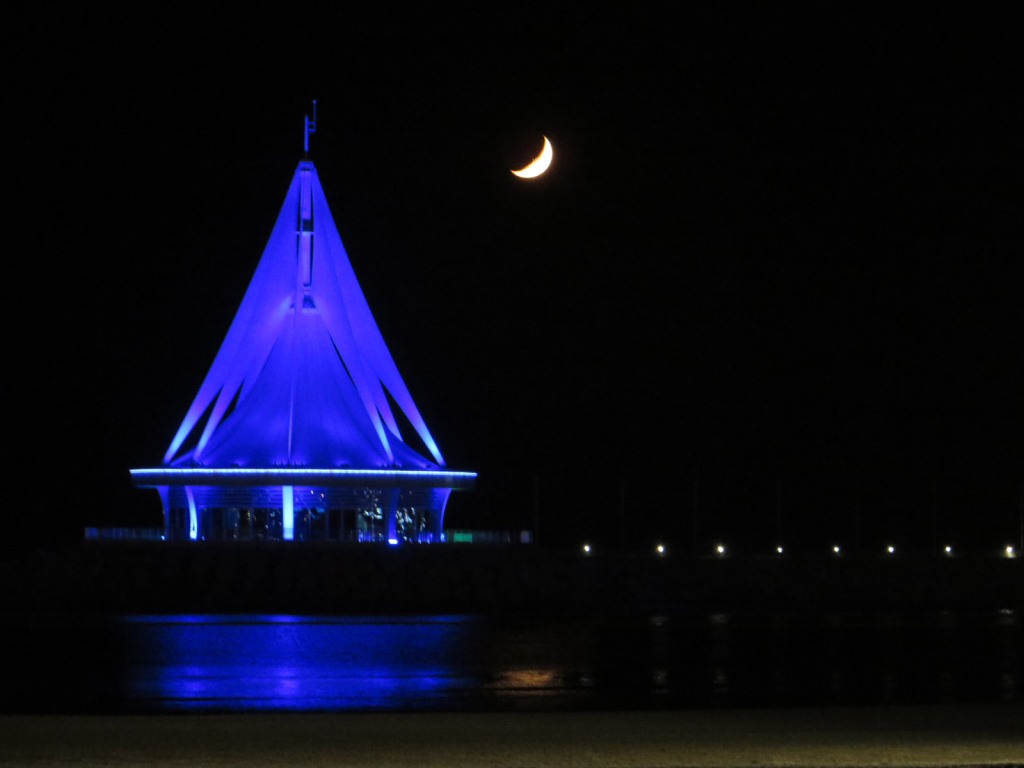

The next morning, I strolled out onto the beach before breakfast, and was rewarded with the entire Caspian Sea to myself. Those are my footprints alone.
The Caspian seemed strangely inert, although very clean, and there was no evidence of fish, seaweed or shells. Being only a third as salty as the ocean, there was no salty breeze or even aftertaste as I swam, making it one of the most unusual seas I have dipped my pasty form into.
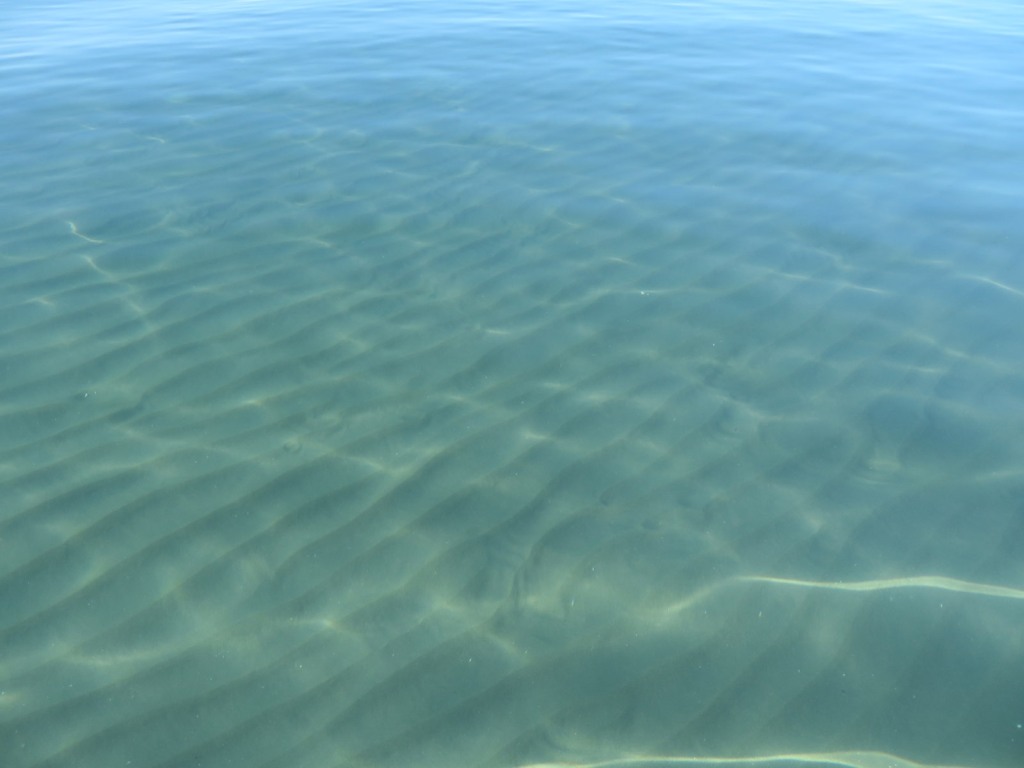
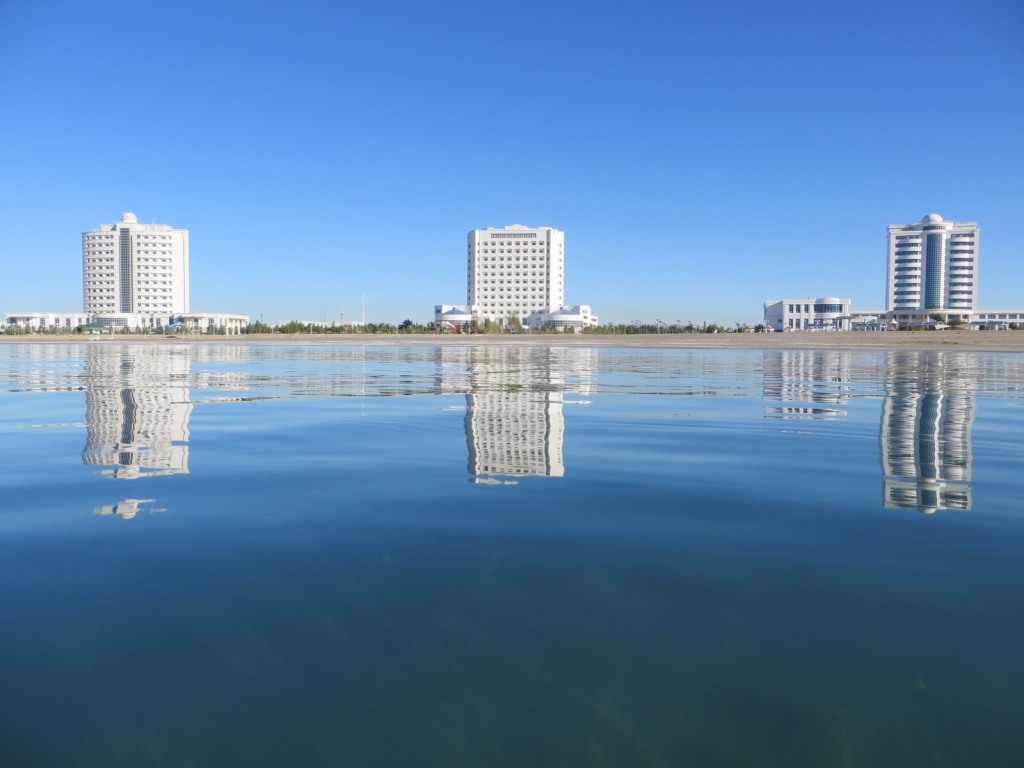
It was a sublime experience to lounge in the cool waters of my own private sea, its surface almost mirror-flat.
In Turkmenbashi itself our first stop was the railway station. The station porter showed us around the vaulted basement, which included an inscription carved during the Second World War.


The ticket office was as formal and decorated as they often are in the former USSR, but quite devoid of passengers. Or indeed, tellers.
There is clearly some rail traffic, but apparently mostly freight, plying its way across the vast deserts of Central Asia.
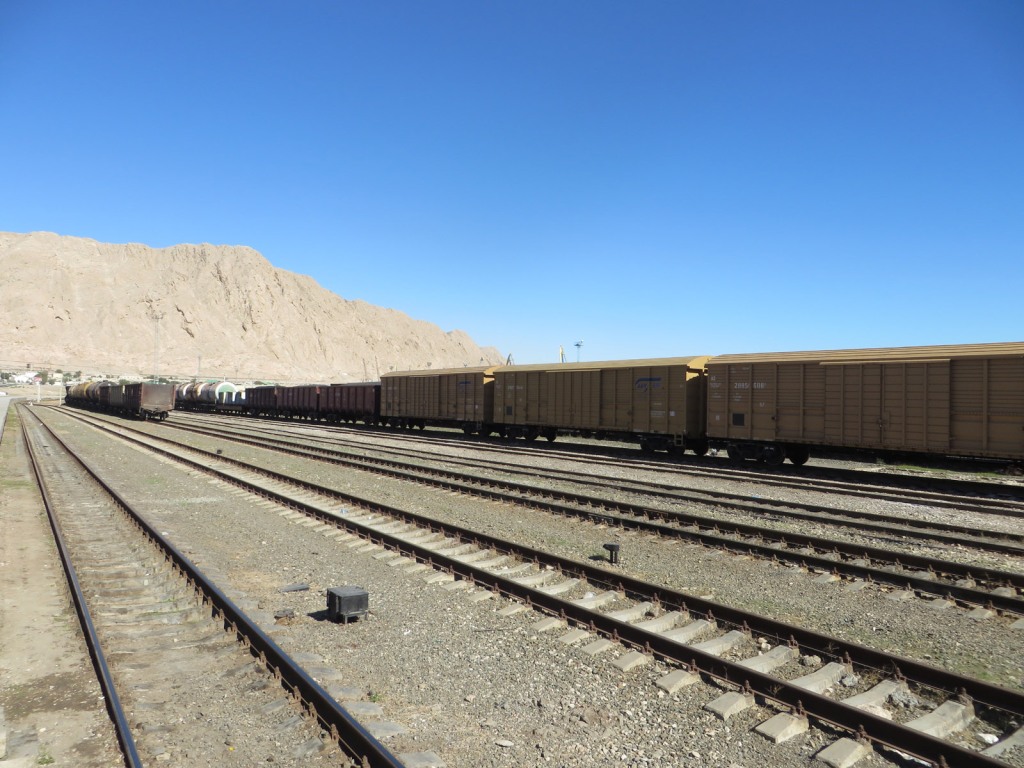
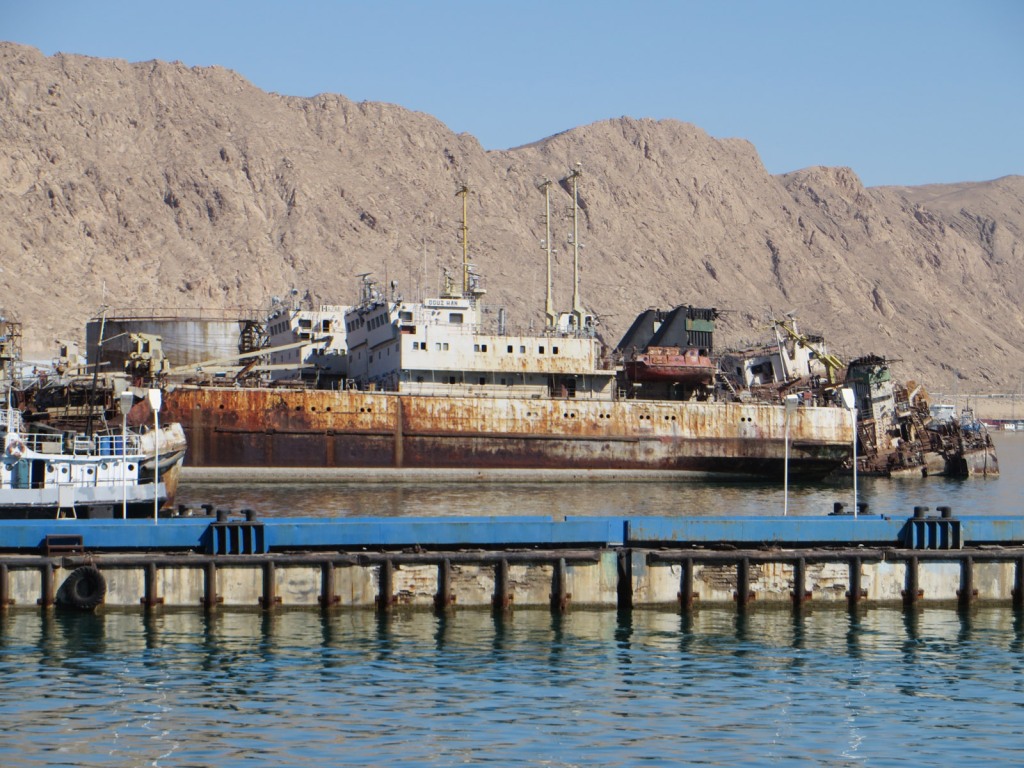
Most of the vessels in Turkmenbashi harbour had seen better days.
There is however a regular ferry service to Azerbaijan, which operates during the ice-free months. There are also ferry routes to Kazakhstan, Russia and other ports within Turkmenistan.

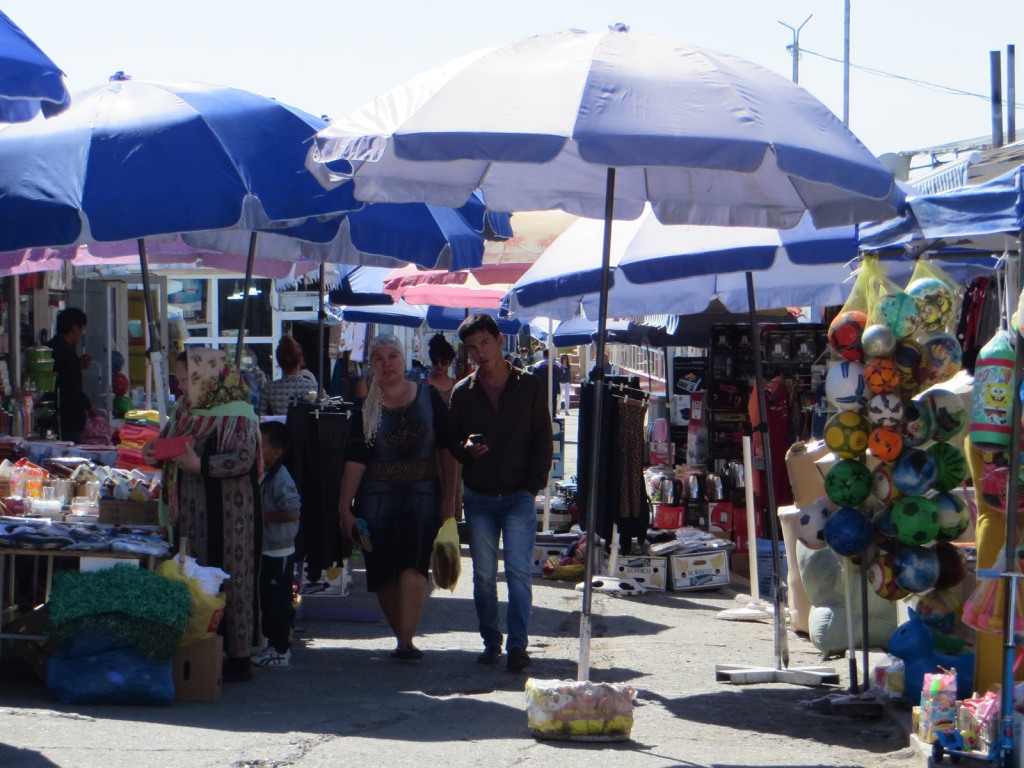
We had a wander through a local market not far from the station, this one was far less traditional than the others we’d been taken to on the tour.
The war memorial in Turkmenbashi is just across the road from the station, and includes an eternal flame to the unknown soldier.


The Soviet Union, like the United States, joined the war in 1941 and thus notes that year as the start of the war. Europe of course went to war in 1939.
Turkmenbashi city is not nearly as polished as Awaza, but was all the more real for it. We wandered around for an hour or so, seeing the most regular people and neighbourhoods that we’d yet witnessed in Turkmenistan.

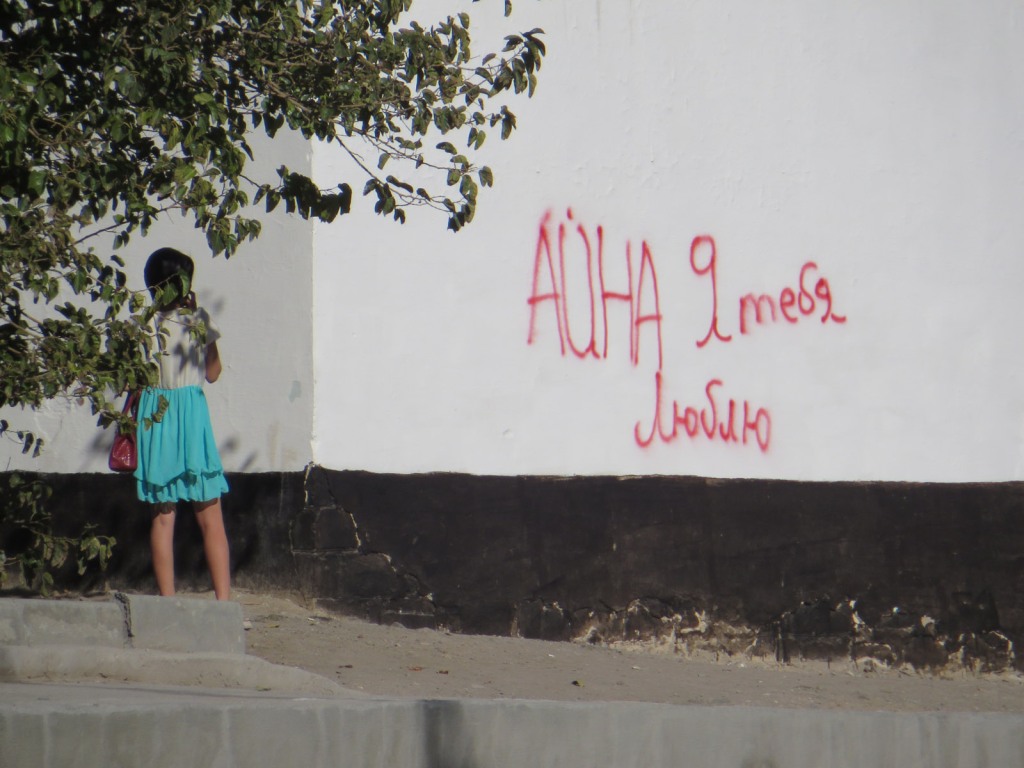
This caught me by surprise, actual graffiti in such an autocratic country could only indicate a severely disgruntled sentiment – or maybe it says something enlightening?
Opposite the port area was this well presented place, as far as I can tell it’s a public building used as a wedding venue. The statue is a mother and child.
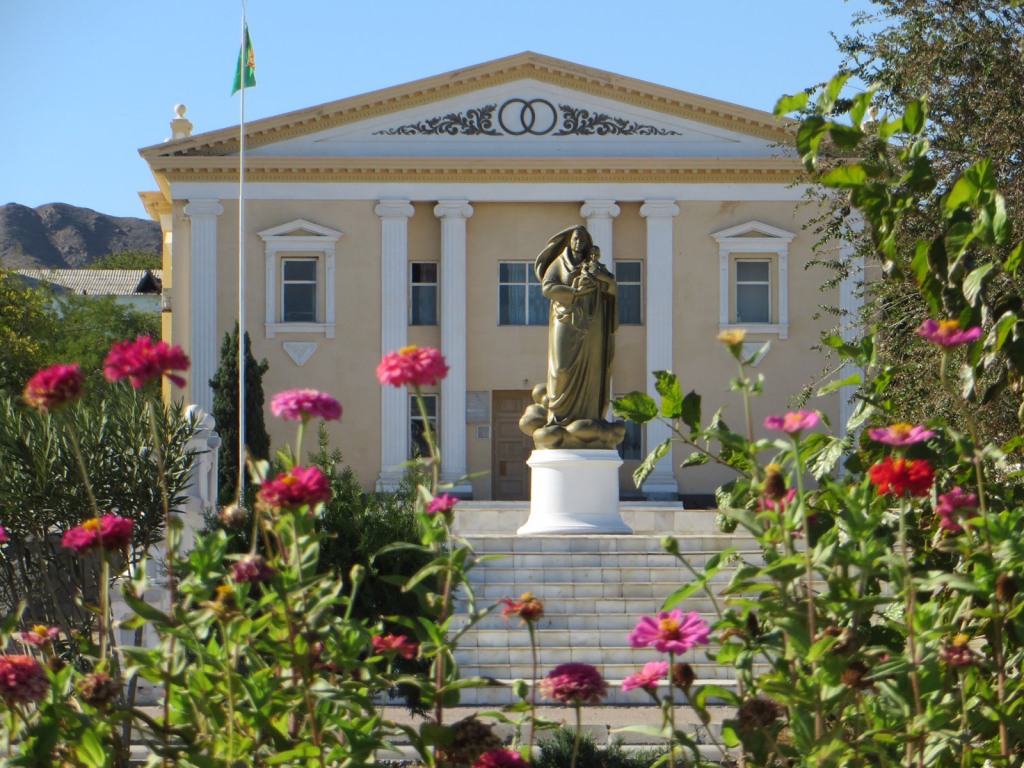

As we wandered the town, we came across a group of teenagers practicing a dance routine for the forthcoming national celebrations. They were keen to talk to us and take pictures, and I even had a shot of one of their big woolly hats!
Created 2017 | Updated 2024
